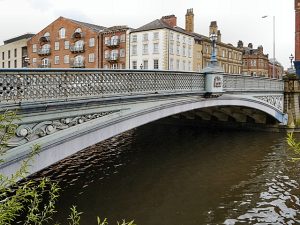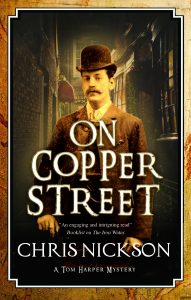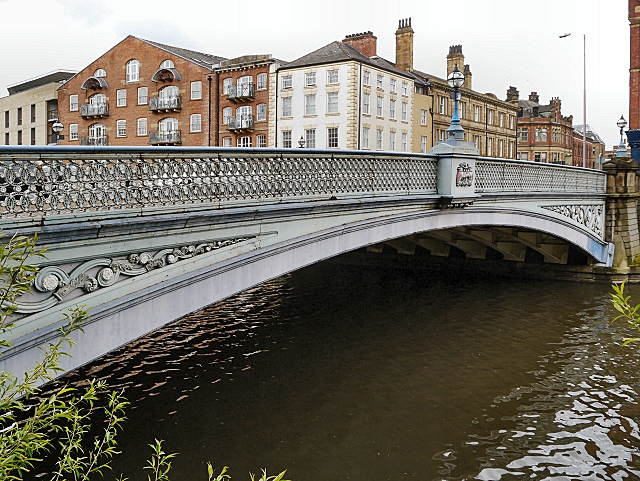The fascinating history of Leeds Bridge by Chris Nickson.
 Leeds Bridge – that one at the bottom of Briggate. We walk and drive over it all the time with hardly a second thought. But in the seven (possibly more) centuries there’s been a structure there, it’s been witness to many things: warfare, commerce, art, invention. Not a bad record for something as basic as a span over the River Aire, is it?
Leeds Bridge – that one at the bottom of Briggate. We walk and drive over it all the time with hardly a second thought. But in the seven (possibly more) centuries there’s been a structure there, it’s been witness to many things: warfare, commerce, art, invention. Not a bad record for something as basic as a span over the River Aire, is it?
We don’t know when the first bridge was built, although the initial mention dates from 1322. According to digging done in the early 19th century, there was a Roman ford just west of there (no traces remain now), and in Saxon and Norman times, the ford remained. There was also a ferry across the water, connecting Leeds (or Ledes as it was then) with the south. It would have been a well-travelled route, one of the main ways to reach York from London.
In 1207, Briggate was created – the first planned community in Leeds, a street running from what’s now the Headrow all the way to the river. There has been speculation that the development would surely have included a bridge. Yet the very reason for Briggate coming into being was to raise desperately needed rents for the owner of the land, so would there even have been money to spent on building a span?
What we can definitely say is that a little over 100 years later a bridge certainly did exist, and at some point after that a chantry chapel, dedicated to St Mary, stood on the NE corner. The bridge itself was 12 feet wide, and for many centuries was the only river crossing, apart from the old bridge at Kirkstall, three miles upstream.
Leeds Bridge saw the birth of the wool trade that made the fortunes of many merchants; on Tuesday and Saturday morning the cloth markets were held there, weavers displaying their goods on the parapets. By 1684 the market was too big and busy, and it was moved to Briggate, with trestles set up on either side of the street.
Steps from the bridge led down to the riverbanks, the stones coming from Kirkstall Abbey.
Leeds was becoming an important town, with more traffic flowing to and fro. It needed a bigger bridge, and the old one was widened three times (1730, 1760, 1796) before being replaced entirely by a new iron structure in 1873.
By then, there were several options for crossing the river, with five other bridges built. None, however, has quite has the same romance, best captured by Leeds painter J. Atkinson Grimshaw in 1880.
And what about the invention? Next time you’re down there, look at the blue plaque on the building at the SW corner of the bridge. From there, in 1888, Louis Le Prince took the very first moving pictures.
https://www.youtube.com/watch?v=0CtMXpVLxWs
But that’s the beauty of Leeds; everywhere has more history than you imagine.
 Chris Nickson is the author of several historical crime novels set in Leeds. His latest, On Copper Street, the fifth in his Inspector Tom Harper series, takes place in 1895. You can order it here.
Chris Nickson is the author of several historical crime novels set in Leeds. His latest, On Copper Street, the fifth in his Inspector Tom Harper series, takes place in 1895. You can order it here.
The day after his release from prison, petty criminal Henry White is found stabbed to death at his terraced home on Copper Street. Pursuing enquiries in a neighbourhood where people are suspicious of strangers and hostile to the police, DI Tom Harper and his men find the investigation hard going. If anyone knows anything about Henry White’s murder or the robbery that landed him in gaol in the first place they are unable or unwilling to say.
At the same time, acid is thrown over a young boy in a local bakery in a seemingly unprovoked attack.
Praying for a breakthrough, Harper knows that he must uncover the motive in each case if he is to have any chance of catching the culprits. One thing he is certain: if he doesn’t find answers soon, more deaths will follow.

